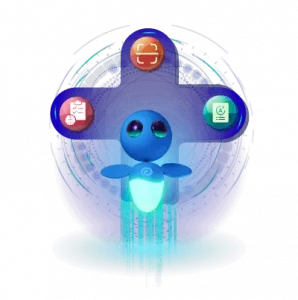Auto Generation Of Tests
There is no AI without data :)
Some say they do it. It’s taken us 11 years
We work on exciting and intuitive tech every day to deliver next-generation learning to our users. Experience these powerful tools for yourself and see how we do what we do.

Get ready to ace your exams with our cutting-edge Auto Test Generation tool. Whether you are preparing for competitive exams or school tests, our platform allows you to generate personalised tests with maximum customisation quickly. With our advanced Test Quality Score algorithm, you can be assured of high-quality questions that accurately assess your knowledge. With the Create Your Own Test feature, you can select specific chapters and difficulty levels for specific goals and exams to create personalised tests tailored to….
Explore
Say goodbye to Math anxiety with Instasolver–the revolutionary AI-powered platform that provides instant step-by-step solutions to complex Math problems. Our cutting-edge platform uses advanced deep-learning language models and is trained on a vast math data corpus to provide accurate solutions at lightning speed. Solving mathematical word problems is no easy feat. It requires solving complex mathematical concepts and understanding and interpreting the natural language to formulate the computational graph of mathematical concepts. Embibe’s content intelligence stack has more than 2000….
Explore
No more struggling with doubts on your own! Our AI-powered platform is designed to help you resolve your queries quickly and easily. Whether you’re struggling with a difficult concept or need clarification on a particular topic, our platform connects you with the expert assistance you need to succeed instantly. Start using Embibe’s Doubt Resolution solution today! Millions of students nationwide use Embibe regularly to learn more, practice hard and test themselves to achieve learning outcomes. Throughout this journey, it is….
Explore
Our innovative tool, MetaTags Ranker, is designed specifically for subject matter experts, providing them with comprehensive suggestions for tagging any given question’s subject, unit, chapter, topic, and concept. This powerful tool also offers suggestions for the question’s difficulty level, ideal time, and bloom level, making creating high-quality content that meets students’ goals easier than ever. In the field of Education Technology, one of the important tasks is to make content accessible and discoverable for all users. In order to do….
Explore
Empower Your Learning with Knowledge Buddy. Our Knowledge Buddy tool is an intelligent chatbot that uses the power of Artificial Intelligence to help students revise their learning and resolve their doubts in real-time. It also answers students’ questions while they engage with learning content, providing them with immediate feedback and support. At Embibe, we are committed to empowering students’ learning journey. Knowledge Buddy is an Artificial Intelligence chatbot built to help students revise their learnings using question answering and doubt….
Explore
Discover the power of Embibe’s MEDHAS platform, the next level of learning and assessment technology! Our cutting-edge platform leverages the latest natural language understanding (NLU) technology advancements to provide hyper-tagged learning and assessment content, contextualised knowledge graphs, and interpretable predictions that enable personalised and adaptive learning experiences. Medhas, a Sanskrit word, means knowledge, understanding and intelligence. Natural language understanding (NLU) platform is very important to build an EdTech AI platform. NLU capabilities enable hyper-tagged learning and assessment content, contextualized knowledge….
Explore
We understand every student is different, with their unique learning style, pace, and preferences. That’s why our platform is designed to analyse your performance and provide targeted learning resources to help you improve your skills and knowledge. Embark on a personalised achievement journey with Artificial Intelligence in education to identify your strengths and weaknesses and learn more efficiently. Personalised Achievement Journey (PAJ) aims to provide an optimal learning path to a student given their current knowledge level, a predefined time….
Explore
Unlock new horizons of learning outcomes with our Translation tool to access a wide range of learning materials in your preferred language. Our advanced Neural Machine Translation technology is infused with human intelligence and Artificial Intelligence to provide accurate translations in real-time. Embibe is an AI platform for delivering learning outcomes at scale [5][6]. We are committed to students all across the world, studying in any language. The translation project aims to provide educational content in vernacular languages to millions….
Explore

























